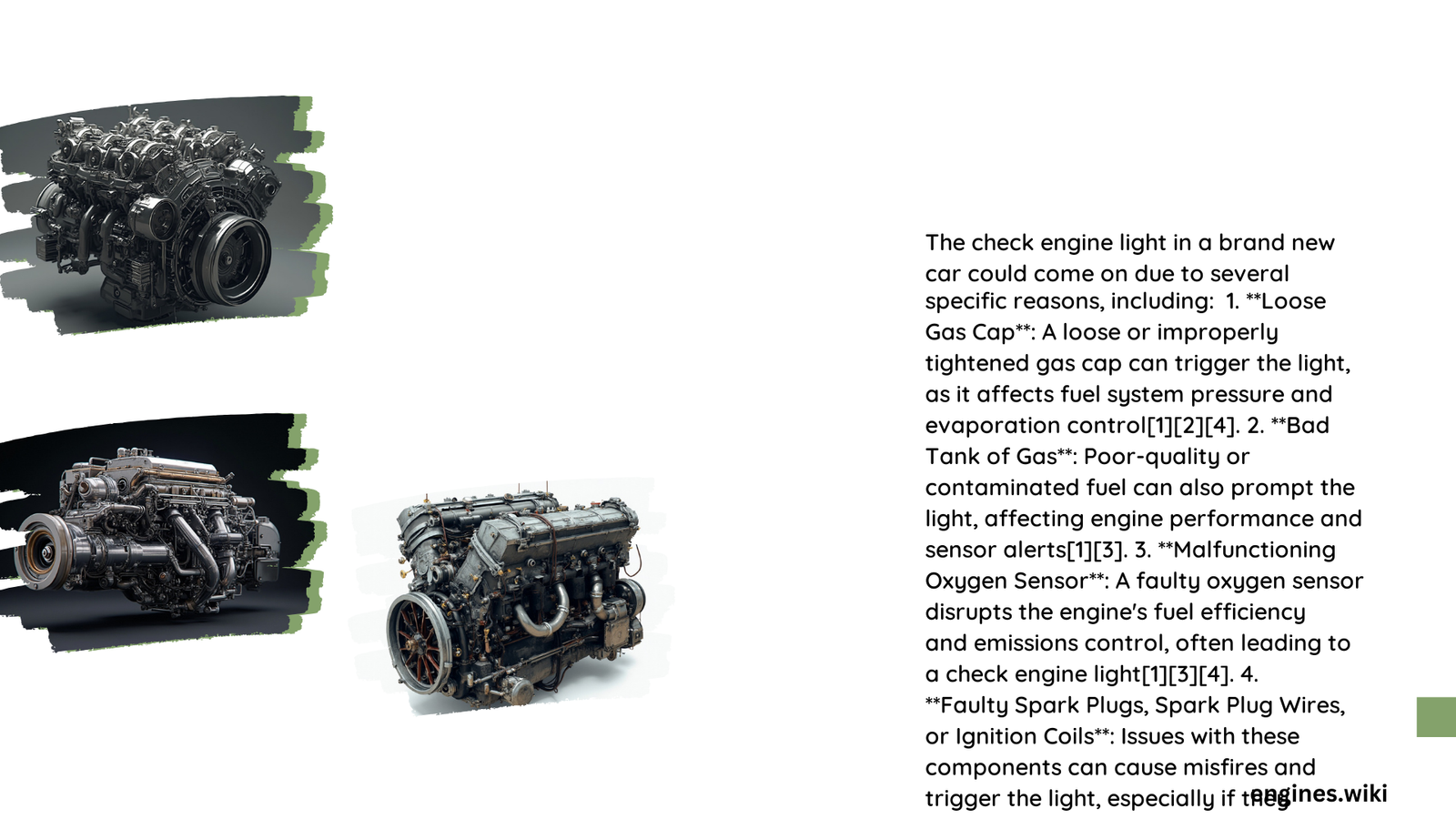The check engine light in a brand new car can be alarming and confusing for owners. This warning light typically indicates a problem with the vehicle’s engine, emissions system, or related components. Common reasons include sensor malfunctions, loose fuel caps, or minor electrical issues. While concerning, many causes are not severe and can be easily resolved. Understanding why the check engine light might illuminate in a new car can help owners address issues promptly and maintain their vehicle’s performance.
Why Does the Check Engine Light Activate in New Vehicles?
The check engine light, also known as the Malfunction Indicator Lamp (MIL), is part of the On-Board Diagnostics (OBD) system in modern vehicles. It illuminates when the car’s computer detects an issue that could affect the engine’s performance or emissions. Even in brand new cars, this light can activate due to various reasons:
- Manufacturing defects
- Sensor calibration issues
- Software glitches
- Minor mechanical problems
- User-related issues (e.g., loose gas cap)
What Are the Most Common Causes of Check Engine Light in New Cars?

Several issues can trigger the check engine light in a new vehicle:
-
Loose or Faulty Gas Cap: A loose, damaged, or missing gas cap is one of the most common and easiest-to-fix causes. It can lead to fuel system pressure loss and increased emissions.
-
Oxygen Sensor Malfunction: The oxygen sensor measures the amount of unburned oxygen in the exhaust system. A faulty sensor can lead to decreased fuel efficiency and increased emissions.
-
Catalytic Converter Issues: While rare in new cars, a defective catalytic converter can trigger the check engine light. It’s crucial for reducing harmful emissions.
-
Mass Airflow Sensor Problems: This sensor measures the amount of air entering the engine. A malfunction can affect the engine’s air-fuel mixture, leading to performance issues.
-
Spark Plug or Ignition Coil Failures: These components are essential for proper engine combustion. Faulty spark plugs or ignition coils can cause misfires and trigger the check engine light.
How Do Diagnostic Trouble Codes (DTCs) Relate to Sensor Malfunctions?
Diagnostic Trouble Codes (DTCs) are specific codes stored by the vehicle’s computer when it detects an issue. These codes help identify the problem area:
| DTC Range | Related System |
|---|---|
| P0xxx | Powertrain |
| C0xxx | Chassis |
| B0xxx | Body |
| U0xxx | Network |
For example:
– P0171-P0175: Fuel system too lean or rich
– P0300-P0308: Engine misfire detected
– P0420-P0439: Catalytic converter efficiency below threshold
These codes provide valuable information for diagnosing the specific issue causing the check engine light to illuminate.
Can Environmental Factors Affect Sensor Performance in New Cars?
Yes, environmental factors can impact sensor performance, even in new vehicles:
- Temperature Extremes: Very hot or cold temperatures can affect sensor accuracy and reliability.
- Humidity: High humidity levels can lead to moisture accumulation, potentially causing electrical issues.
- Altitude: Changes in altitude can affect air pressure sensors and engine performance.
- Road Conditions: Rough roads or debris can damage sensors or loosen connections.
While modern vehicles are designed to handle various environmental conditions, extreme situations can still lead to sensor malfunctions and trigger the check engine light.
What Should I Do If the Check Engine Light Comes On in My New Car?
If your check engine light illuminates in a new car, follow these steps:
- Check the gas cap: Ensure it’s properly tightened.
- Monitor vehicle performance: Note any changes in acceleration, fuel efficiency, or unusual noises.
- Use an OBD-II scanner: This can help identify the specific issue through DTCs.
- Consult your owner’s manual: It may provide specific guidance for your vehicle model.
- Contact the dealership: New cars are typically under warranty, so the dealer should address any issues at no cost.
How Much Does It Cost to Diagnose and Fix Check Engine Light Issues?
Costs can vary depending on the issue:
- Diagnostic Fee: $50-$150
- Gas Cap Replacement: $10-$50
- Oxygen Sensor Replacement: $200-$500
- Mass Airflow Sensor Replacement: $300-$400
- Catalytic Converter Replacement: $1,000-$2,500 (rare in new cars)
Remember, most issues in new cars should be covered under warranty, significantly reducing or eliminating these costs for the owner.
Can I Continue Driving with the Check Engine Light On?
While it’s generally safe to drive short distances with the check engine light on, it’s best to have the issue diagnosed as soon as possible. If the light is flashing, this indicates a severe problem, and you should stop driving immediately to prevent engine damage.
In conclusion, while a check engine light in a brand new car can be concerning, it’s often due to minor issues that can be easily resolved. Always consult with your dealership or a qualified mechanic to ensure your new vehicle remains in top condition.
References:
1. National Highway Traffic Safety Administration (NHTSA)
2. Car and Driver: What Does the Check Engine Light Really Mean?
3. Edmunds: What Does the Check Engine Light Mean?
